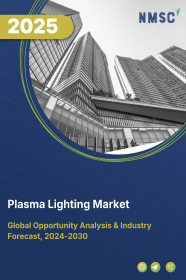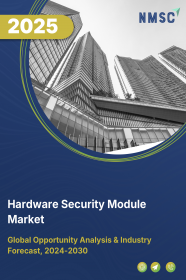
VCSEL Market by Type (Single-Mode and Multimode VCSEL), and by Application (Data Communications, Infrared Illumination, Sensing, Pumping, GPS, and Others) - Global Opportunity Analysis and Industry Forecast, 2021 – 2030
Industry: Semiconductor & Electronics | Publish Date: 28-Nov-2024 | No of Pages: 356 | No. of Tables: 206 | No. of Figures: 176 | Format: PDF | Report Code : SE87
US Tariff Impact on VCSEL Market
Trump Tariffs Are Reshaping Global Business
Market Definition
The global VCSEL Market was valued at USD 1.18 billion in 2020 and is anticipated to reach USD 4.15 billion by 2030 expanding at a CAGR of 11.5% during the forecast period, between 2021 and 2030.
Vertical cavity surface emitting laser (VCSEL) is a type of laser diode with a monolithic laser resonator that radiates the light in a direction perpendicular to the chip surface. This makes it different than the conventional edge-emitting laser (EEL) diodes, where the light is emitted parallel to the chip. Although VCSEL devices produce low power, they provide the best beam quality and therefore offer greater reliability and performance.
They are widely used in data communications, particularly in applications like data centers and networking. This is because a single VCSEL can transmit data at very high speed. When two or three VCSELs are assembled on a chip, they can be used for high-precision velocity measuring in sensing applications. Since the introduction of VCSELs in 3D sensing modules in smartphones, Apple has been a significant consumer of VCSELs. For example, in 2020 alone, more than 325 million of VCSELs have been estimated to be used in iPhones.
Market Dynamics and Trends
The demand for VCSEL majorly comes from data communication applications. However, its use is increasing in autonomous vehicles for LiDAR, sensing, in-cabin/driver monitoring, and gesture recognition. In addition, the enhancement in automotive & electronics, increasing demand from high-end applications such as gesture recognition and 3D imaging, increasing transition towards the adoption of connected/autonomous vehicles, and discovery in newer applications such as advanced driver assistance systems (ADAS) are the factors expected to drive the growth of the global VCSEL market.
However, factors such as absence of standard protocols, challenges in increasing the total power output, high cost, limited data transmission range, and complex integration process are expected to limit the global market growth to some extent. On the other hand, growing usage of VCSELs in infrared illumination owing to technological advancements, and increasing demand for VCSELs in consumer electronics are factors expected to create lucrative opportunities for the market players in the coming years.
Market Segmentations and Scope of the Study
The global VCSEL market report is segmented on the basis of type, application, and geography. On the basis of type, the market is segmented into Single-mode VCSEL and Multimode VCSEL. Based on application, the market is classified as data communication, sensing, infrared illumination, pumping, GPS, and Others. Based on geography, the market is fragmented into North America, Europe, Asia-Pacific, and Rest of the World (RoW).
Geographical Analysis
North America is expected to hold major share of the market owing to the growth in data communication industry. Also, technological innovation, increasing emphasis towards enterprise mobility, and rising demand for automotive and consumer electronics are further expected to fuel the VCSEL market in this region.
However, Asia-Pacific is expected to witness a steady growth rate during the forecast period owing to lucrative opportunities offered by countries such as China, Japan, India, South Korea, and Singapore among others. Also, growth in cloud deployment by small and mid-sized companies and increasing R&D activities are expected to drive the VCSEL market in this region.
Competitive Landscape
Key players in the global VCSEL industry are Coherent Corp., Lumentum, AMS-Osram, Trumpf, Broadcom, MKS Instruments, Santec, Leonardo Electronics, Vertilas, Vertilite. These key players have adopted product launch and acquisition strategies to strengthen their the market share. Strategic alliances, acquisitions and innovations along with R&D are key strategies used by market players to maintain market dominance. For instance, in March 2021, Lumentum Holdings Inc. declared its high- efficiency five and six junction VCSEL arrays for automotive LiDAR, advanced consumer and other 3D sensing applications.
Key Benefits
-
The study comprises analytical depiction of the global VCSEL market with current trends and future estimations to depict the imminent investment pockets.
-
The overall market potential is determined to understand the profitable trends to gain a stronger foothold.
-
The VCSEL market report presents information related to key drivers, restraints, and opportunities with a detailed impact analysis.
-
The current market is quantitatively analyzed from 2021 to 2030 to highlight the financial competency of the market.
-
The analysis illustrates the potency of the buyers and suppliers in the VCSEL industry.
VCSEL Market Key Segments
By Type
-
Single-Mode VCSEL
-
Multimode VCSEL
By Application
-
Data Communications
-
Infrared Illumination
-
Sensing
-
Pumping
-
GPS
-
Others
By Region
-
North America
-
U.S.
-
Canada
-
Mexico
-
-
Europe
-
UK
-
Italy
-
Germany
-
Spain
-
Netherlands
-
Rest of Europe
-
-
Asia-Pacific
-
China
-
Japan
-
India
-
Australia
-
South Korea
-
Taiwan
-
Vietnam
-
Rest of Asia Pacific
-
-
RoW
-
Latin America
-
Middle East
-
Africa
-
Key Players:
-
Coherent Corp.
-
Lumentum
-
AMS-Osram
-
Trumpf
-
Broadcom
-
MKS Instruments
-
Santec
-
Leonardo Electronics
-
Vertilas
-
Vertilite
Report Scope and Segmentation
|
Parameters |
Details |
|
Analysis Period |
2020–2030 |
|
Base Year Considered |
2020 |
|
Forecast Period |
2021–2030 |
|
Market Size Estimation |
Billion (USD) |
|
Market Segmentation |
By Type (Single-Mode and Multimode VCSEL), and by Application (Data Communications, Infrared Illumination, Sensing, Pumping, GPS, and Others) |
|
Geographical Segmentation |
North America (U.S., Canada, Mexico) Europe (UK, Italy, Germany, Spain, Netherlands, Rest of Europe) Asia-Pacific (China, Japan, India, Australia, South Korea, Taiwan, Vietnam, Rest of Asia Pacific) RoW (Latin America, Middle East, Africa) |
|
Companies Profiled |
Coherent Corp., Lumentum, AMS-Osram, Trumpf, Broadcom, MKS Instruments, Santec, Leonardo Electronics, Vertilas, Vertilite |

















 Speak to Our Analyst
Speak to Our Analyst




















